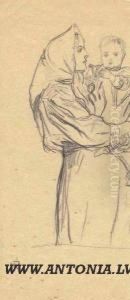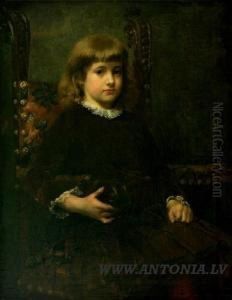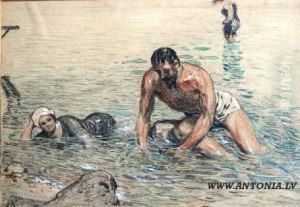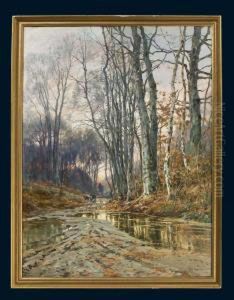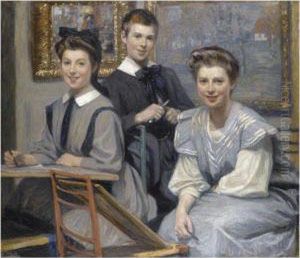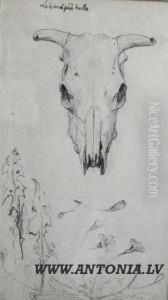Janis Rosenthals Paintings
Jānis Rozentāls was a seminal Latvian painter and one of the founders of professional Latvian art as well as a key figure in its early development. Born on March 18, 1866, in Saldus, which was then part of the Russian Empire, Rozentāls grew up in a peasant family. Despite the modest means of his family, he showed an early talent for art and was supported by local patrons who recognized his potential. This support enabled him to study at the Imperial Academy of Arts in Saint Petersburg, where he was exposed to the latest European art trends and received a rigorous education in the arts.
Rozentāls' work is often characterized by an eclectic mix of styles, reflecting the broad range of influences he absorbed during his career, including realism, symbolism, and Art Nouveau. He was particularly known for his portraits, genre scenes, and landscapes. Rozentāls had a keen ability to capture the psychological depth and personality of his subjects, often infusing his work with a sense of national identity. His paintings often reflected the social and cultural milieu of Latvia at the turn of the 20th century.
Throughout his career, Rozentāls was involved in various artistic societies and participated in numerous exhibitions, both in the Russian Empire and abroad, helping to raise the profile of Latvian art on the international stage. His works were met with critical acclaim and were influential in shaping the visual language of Latvian nationalism and the national awakening that was occurring at the time.
Tragically, Jānis Rozentāls' life was cut short when he died of appendicitis on December 26, 1916, in Helsinki, Finland. Despite his relatively short life, his legacy has had a lasting impact on Latvian art and culture. Rozentāls is remembered as a pioneer of modern Latvian painting and as a national cultural hero. His works are held in high esteem and can be found in many museums, galleries, and private collections both in Latvia and internationally.

